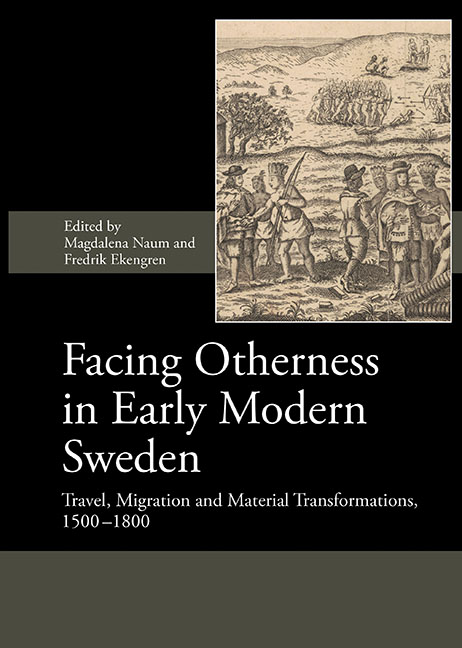Book contents
- Frontmatter
- Contents
- List of Illustrations
- List of Contributors
- Preface
- List of Abbreviations
- I Material Transformations
- Introduction
- 1 Tracing Other in 17th-Century Sweden
- 2 Houses of Wood, Houses of Stone: On Constructing a Modern Town in Early Modern Kalmar
- 3 Indigeneity, Locality, Modernity: Encounters and their Effects on Foodways in Early Modern Tornio
- 4 Brewing an Ethnic Identity: Local and Foreign Beer Brewing Traditions in 15th- to 17th-Century Sweden – an Example from Nya Lödöse
- 5 Tactile Relations: Material Entanglement between Sweden and its Colonies
- II Migration and Neighbourly Interactions
- III Overseas Travel
- IV Conclusions
- Index
4 - Brewing an Ethnic Identity: Local and Foreign Beer Brewing Traditions in 15th- to 17th-Century Sweden – an Example from Nya Lödöse
from I - Material Transformations
Published online by Cambridge University Press: 23 July 2019
- Frontmatter
- Contents
- List of Illustrations
- List of Contributors
- Preface
- List of Abbreviations
- I Material Transformations
- Introduction
- 1 Tracing Other in 17th-Century Sweden
- 2 Houses of Wood, Houses of Stone: On Constructing a Modern Town in Early Modern Kalmar
- 3 Indigeneity, Locality, Modernity: Encounters and their Effects on Foodways in Early Modern Tornio
- 4 Brewing an Ethnic Identity: Local and Foreign Beer Brewing Traditions in 15th- to 17th-Century Sweden – an Example from Nya Lödöse
- 5 Tactile Relations: Material Entanglement between Sweden and its Colonies
- II Migration and Neighbourly Interactions
- III Overseas Travel
- IV Conclusions
- Index
Summary
During medieval and early modern times regional variations in beer culture may have been connected to ethnicity. The use of herbal beer additives – hops (Humulus lupulus L.) and gruit – predominantly sweet gale (Myrica gale L.) is reflected in the archaeobotanical record and reveals the Swedish west coast, then belonging to Denmark, as a part of the western European sweet gale belt. The region of Svealand was a hop beer area, and in eastern Götaland mixed beer types were common. Brewing remnants from the west coast town of Nya Lödöse (1480–1540) may indicate multi-ethnic influences within the town and individual households.
BEER AND IDENTITY
In medieval and early modern northern Europe the tradition of brewing and drinking beer was deeply rooted in all levels of society; it worked then (and indeed perhaps works nowadays) as a social glue. However, brewing traditions and culinary preferences varied between geographical regions and social groups, making it plausible to link beer types to the question of the identity and perhaps the ethnicity of its producers and consumers. When referring to identity and ethnicity, the basic model used here is that described by Richard Jenkins (2004) as a process of “being” or “becoming”. Thus “identity” is used as a broad term referring to any social identity – such as ethnicity, age, class, gender, profession etc. However, the term “ethnicity” is here used in a much more limited and simplified way, referring to a self-identification by specific ethnic groups. This chapter discusses the possibility of linking certain regional variations in beer culture to ethnicity and regional identity in northern Europe during the 15th to 17th centuries. The main aim is to expose the complexity of the question at hand, and to try to identify possibilities and limitations of the task. It is also to provide an overview of regional variations in beer culture from 1450 to 1800, and to give some background as to how and why these variations may be linked to the identity and ethnicity of the consumers. Central to the discussion is a case study from a town plot in Nya Lödöse in western Sweden, where the archaeobotanical record provides evidence for a brewery on the plot in the period c. 1480–1612.
- Type
- Chapter
- Information
- Facing Otherness in Early Modern SwedenTravel, Migration and Material Transformations 1500–1800, pp. 61 - 86Publisher: Boydell & BrewerPrint publication year: 2018



